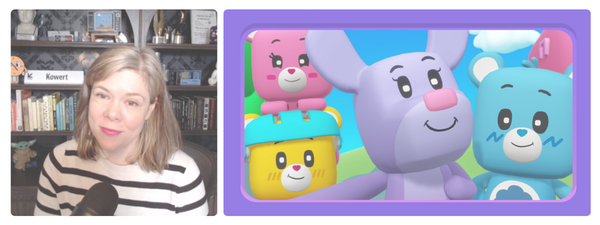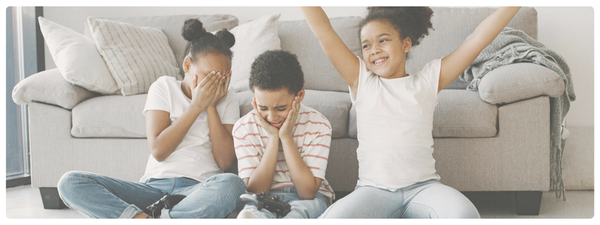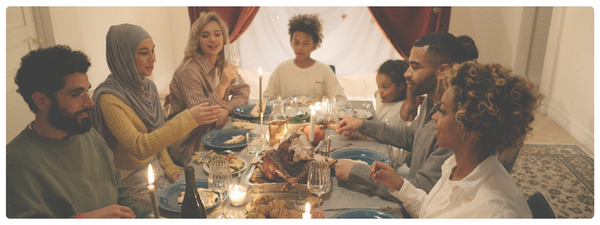What does it mean to be a good human online?
That’s the question at the heart of the concept of digital citizenship. It’s really not that different from being one off-screen, or a good citizen in general.
OK, easy enough — but what about our kids, who are growing up in a digitally native world? For them, on- and off-screen communities will be even more integrated. It will, soon enough, be an outdated concept to even consider the digital and physical worlds, and their communities, as distinct things.
Kids today spend lots of time in digital spaces with online or on-screen communities. They’re learning, playing, communicating, connecting, and exploring through a screen, tapped into groups that can span the entire globe. As part of these communities, kids are learning to interact with and support the group dynamic, which might cover a separate online group or an extension of a community they engage with daily, like their classmates or family members.
Teaching digital citizenship is important at this age because kids are making their foray into the world — which, today, is a nearly seamless blend of the digital and physical world. Online and offline are no longer distinct spaces. And just as learning how to support our communities can fall into the Life Preparedness Gap for kids, so can understanding how to be a good citizen (and person) online.
Let’s explore what digital citizenship truly means for young children and how caregivers can support it both online and offline.
What is Digital Citizenship?
Before we can teach digital citizenship to our kids, we need to understand it ourselves.
Digital citizenship is the ability to engage safely, responsibly, and respectfully in digital environments. It’s about how we behave when we use technology. How we treat others, how we protect ourselves, and how we contribute to the communities we’re part of online.
In other words, it’s not just about knowing how to use tech, but knowing how to use it thoughtfully.
It covers everything from:
- Online safety and privacy (like not sharing personal information)
- Media and platform literacy (how to find credible info and understand norms)
- Respectful communication (no bullying, no harassment — just like in real life)
- Digital footprint awareness (understanding what we leave behind online)
- Civic understanding and access (recognizing digital spaces are communities too)
Many adults still think digital citizenship is just about online safety — like strong passwords or stranger danger. That’s part of it, yes. But it’s also about etiquette, inclusion, access, and empathy.
Why is it important to actively teach digital citizenship? Because if we don’t teach this, they just won’t learn it. And we’ll be stuck with the same loud, misinformed internet we have today.
It’s less about screen rules and more about developing empathy, fairness, and responsibility. Just like we teach our kids to be kind and considerate at school, on the playground, or in the neighborhood, we need to help them practice those same values in digital spaces — because that’s where they live and grow, too.
Think of it this way: being a good digital citizen is really just being a good citizen, online or off.
What Does Digital Citizenship Mean for Kids?
Digital citizenship looks very different for a 5-year-old than it does for a teenager.
At this age, kids aren’t navigating social media or using unfiltered browsers (and if they are, it’s probably time to pause and reassess). But they are playing games, co-watching videos, video chatting with family, and exploring digital spaces, sometimes alongside a caregiver and sometimes on their own. These early moments lay the foundation for the values, habits, and expectations they’ll carry into future tech use.
For kids ages 4 to 7, digital citizenship is as much about screen time rules and online etiquette as it is just learning how to be a good person in general. Developing empathy, fairness, and responsibility will set the right foundation.
At this age, kids are just starting to grasp:
- Empathy and fairness
- Boundaries and safety
- Responsibility
For younger children, responsibility might look like sitting while using a tablet instead of walking around and dropping it. At four, it might just come down to appropriately using a device and apps.
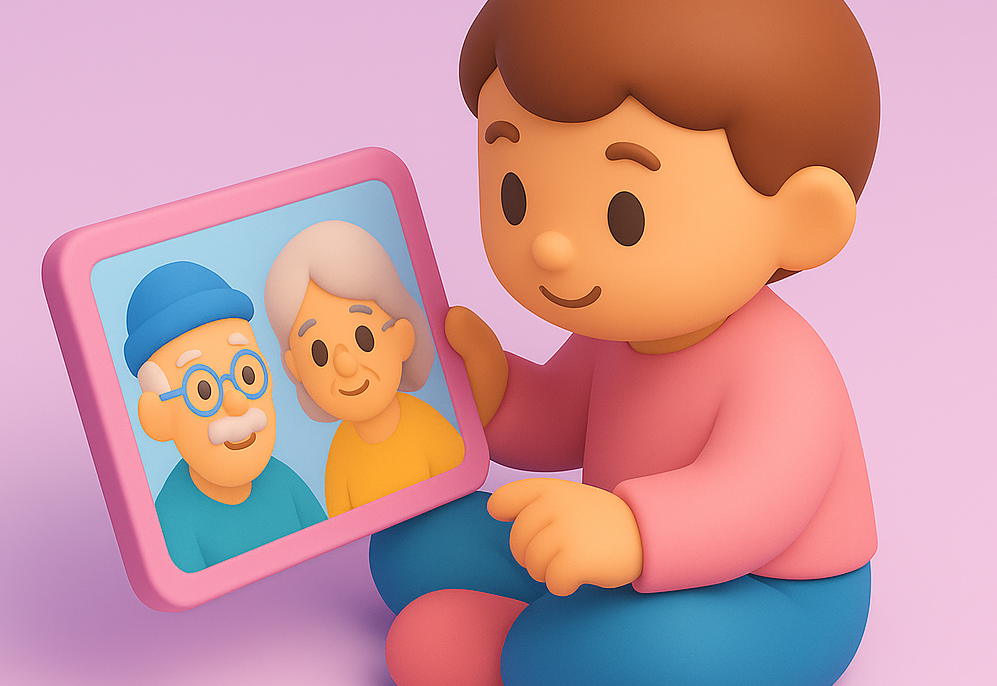
The same perspective rings true for the concept of respect at this age. That can simply mean being respectful to your parents when they say there are limits. Technology is a tool. It’s not a right. Respect and kindness are teachable in every interaction, whether that’s sharing the Switch or respecting a parent’s screen-time limit.
As kids approach seven, their understanding of cause and effect improves. That’s when topics like digital footprints, online kindness, and basic privacy rules become more concrete.
The bottom line: Digital play is social play. These early years are the perfect window to practice compassion, accountability, and flexibility, not just in the backyard or classroom, but in any space where connection happens.
Platform Literacy, Digital Literacy, Media Literacy
Platform awareness, or literacy, is one part of the digital literacy equation, and media literacy is the other. Media literacy includes:
- Evaluating information for truthfulness and accuracy
- Recognizing bias and misinformation
- Understanding that different platforms have different norms and expectations
Kids at this age are still starting to understand the role of media in their lives, and they’re going to start to understand how to behave and interact when they’re online in these spaces, especially as they get closer to age seven. Being media and platform-literate means:
- Being aware of their digital footprint
- Using technology responsibly
- Prioritizing safety and privacy
- Beginning to grasp online fairness and digital rights
Confidently using digital platforms and evaluating the media they find will help kids show up best in their digital communities.
Respect, Kindness & Online Etiquette
For young kids, learning to treat others with kindness isn’t just an offline lesson. Digital spaces — whether that’s a family Minecraft world, a classroom Zoom call, or a shared iPad game — are social spaces too. How you would act in face-to-face situations is how you should act online. Be respectful. Don’t bully people.
That means:
- Speaking kindly, even behind a screen
- Including others in group play or chats
- Respecting personal boundaries
- Learning when to pause before reacting
In short, online kindness is just kindness. The same principles that apply on the playground apply here, too.
That may sound like a silly statement, but it is really important to reiterate because digital spaces can feel different, and people often act differently depending on the platform they’re on. Think about how people show up on Reddit compared to a Discord channel or a game like Animal Crossing.
Sometimes this goes too far. Screens can make it easier to forget there’s a real human on the other side. This is the online disinhibition effect, and it takes root in kids just as easily as in adults. That means we need to teach not just general kindness, but also platform awareness. Norms can shift depending on where they are, but respect and kindness should stay constant.
It’s also where modeling matters most. If we want our kids to practice empathy online, they need to see us doing it too — in our texts, our comments, our tone of voice on a video call.
There’s also a pretty simple way to frame it for kids: “You won’t want to bully people in school — why would you bully people online?”
It’s a think before you act — or type, or say, or do in a game — message that needs to be instilled early, before they get into the heavy texting and social media age groups.
Framing Digital Citizenship as Community Care
Digital citizenship might seem like a tech skills, but it’s really just an evolution of a core life skill: knowing how to care for your community and be part of the human fabric.
When we’re all part of online groups, even as fleeting as a quick round of a game, we need to know how to be part of that digital community. We need to know what it means to be fostering a healthy and resilient online community, just like we learn how to foster a healthy and resilient physical community.
For young kids, community care through a digital-era lens can look like helping a sibling in Minecraft, welcoming a new player to a shared game, or switching games if a friend isn’t allowed to play one. These small decisions reflect respect, kindness, and flexibility — the same values we teach on the playground or in the classroom.
Whether they’re in a chat, a game, or a Zoom call, digital spaces are still communal spaces. Kids can practice what it means to care for the people in them.
It all Relates to Digital Wellness, Too
Digital health should always be part of the conversation. Being aware of how our use of digital devices impacts our physical bodies is an important foundation to set as soon as kids start using them.
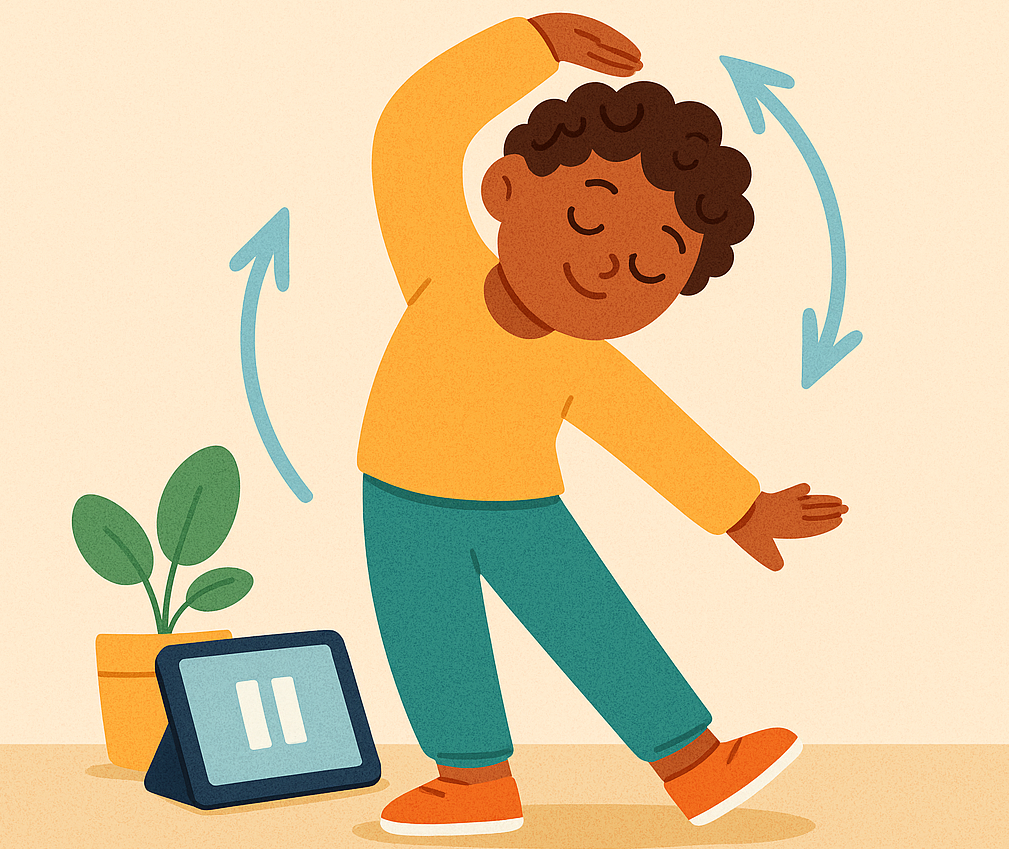
Body breaks, like taking time to stretch and stand up, or even making the move to set the device down and move onto something else to get up and get moving ,are a fun way to frame it with kids. Just like they have to take care of their in-game characters, their human form needs to be cared for if we’re to show up for our communities, physical or digital.
Digital wellness is about finding that ideal balance of screen time and digital engagement that enhances, not detracts from, your life, health, and emotional state.
Teaching Digital Citizenship to Kids
Modeling the behaviors you want to teach (or not teach) will be the most influential in how the kids approach their own. If they’re going to be looking over your shoulder anyway, why not use those moments to explain how you show empathy, respect, and safety in your own online communities?
When they know why you don’t post certain pictures, locations, or places on Instagram, they start to understand the impact of a digital footprint. Start small, teach them one thing at a time, and see what the conversation sparks. Let it be a gentle, curious, and ongoing conversation. From their perspective, you might frame it as choosing a name in a game.
Co-engagement brings the worlds together — yours and theirs. Talk through the importance of community and respect with the tools they’re already using or ones they can easily understand alongside you. Can they see you or a sibling helping someone in a game? Can you walk them through a way to help their sibling, and why that’s important — and more fun?
The more you can model and teach good values overall, the more easily these lessons translate to the digital world.
Teach Values Today to Shape the Digital World of Tomorrow
If the way we raise our kids is the world we’re building for tomorrow, that would of course include our local communities and cultures as much as it does our online and digital ones. Our own sense of community has become so tied to what goes on online, and theirs will be, too.
That’s not to say we have to be experts, or that we can be, with how quickly digital spaces evolve, but we can join our kids in actively learning how to be good humans online. We’re still their greatest source of information, which gives us the opportunity to model values and intention as digital and physical communities become more and more seamless.





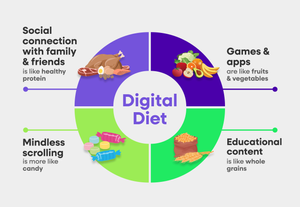
 Copy Link
Copy Link
 Share
to X
Share
to X
 Share
to Facebook
Share
to Facebook
 Share
to LinkedIn
Share
to LinkedIn
 Share
on Email
Share
on Email
